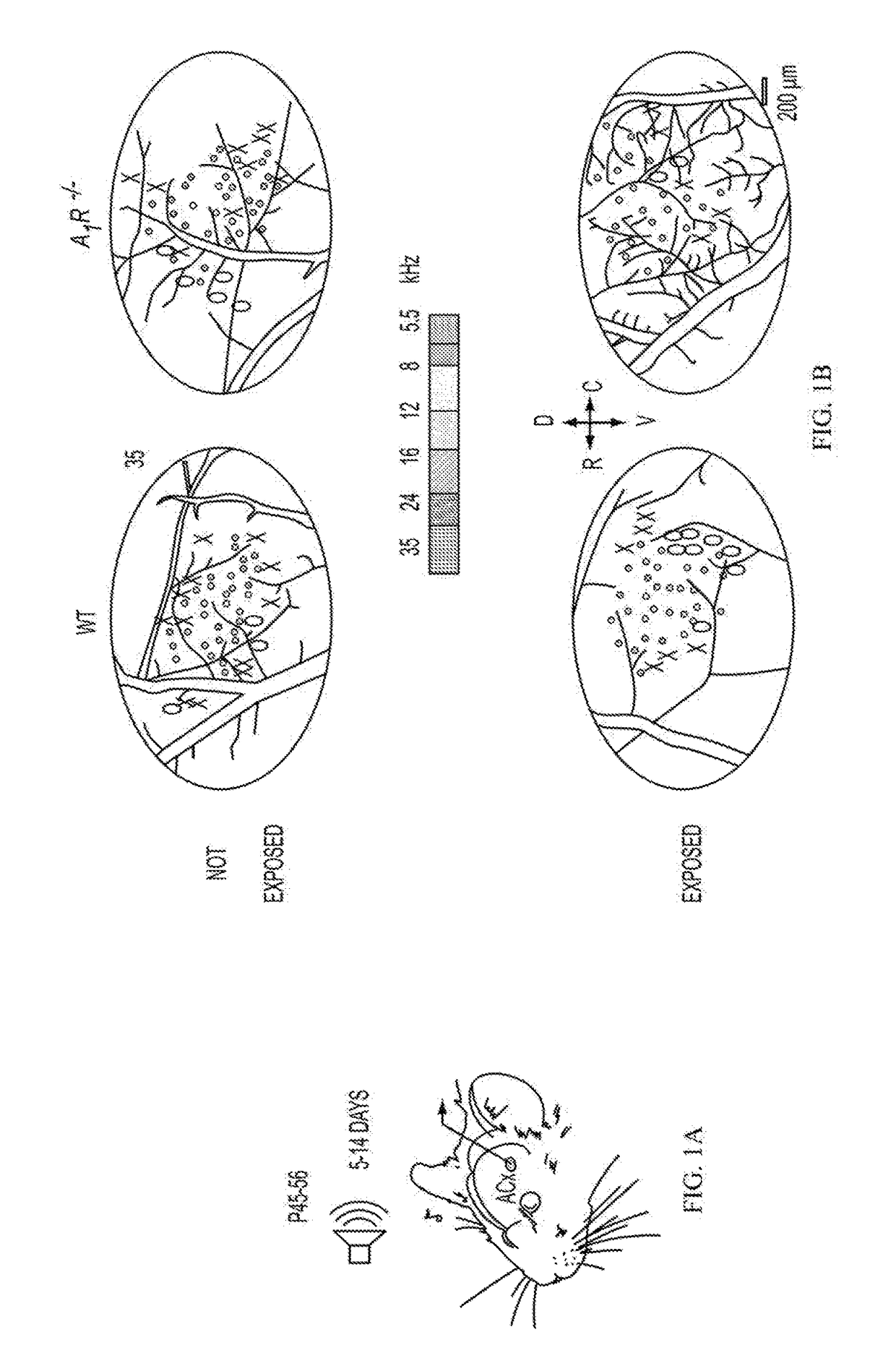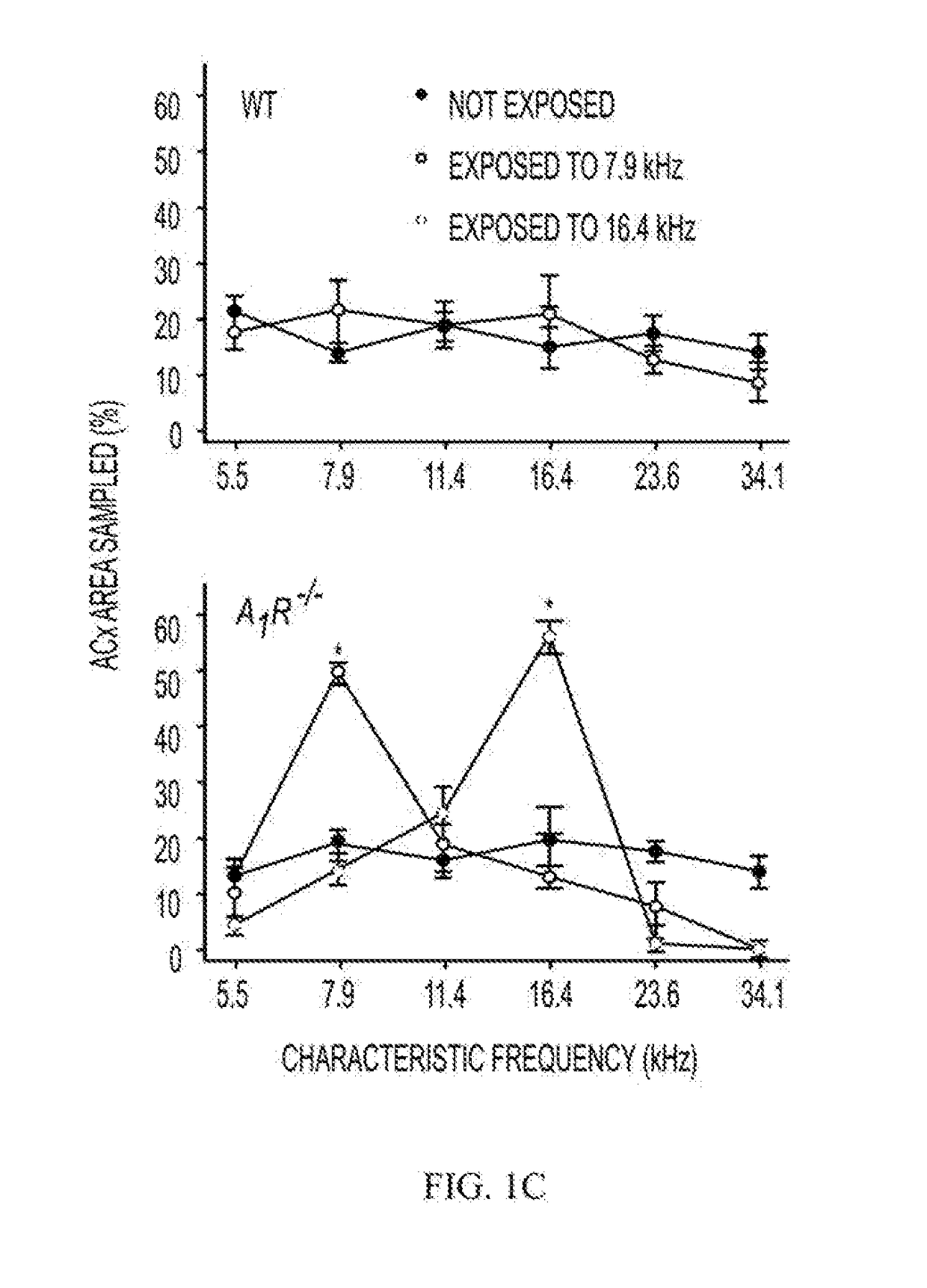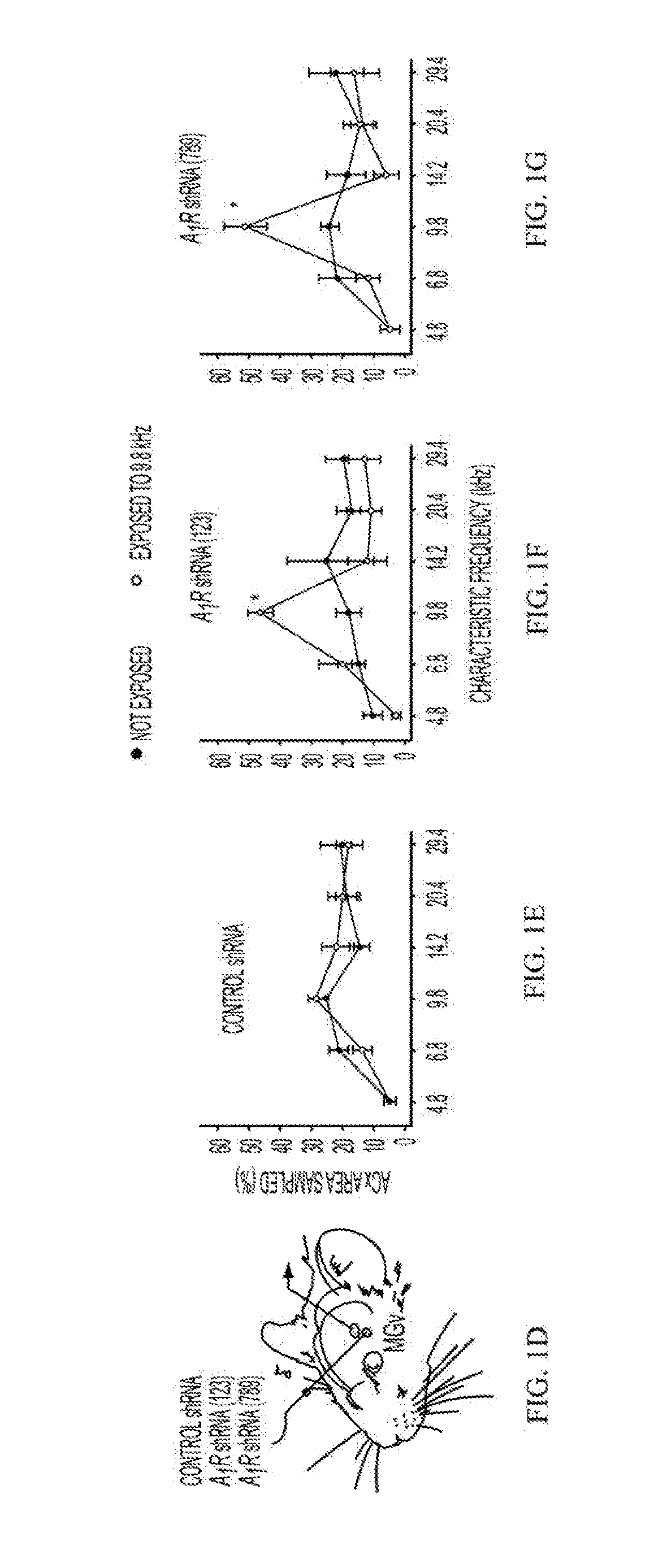Method for improving learning
- Summary
- Abstract
- Description
- Claims
- Application Information
AI Technical Summary
Benefits of technology
Problems solved by technology
Method used
Image
Examples
example 1
ing Reopening of the Critical Period of Auditory Cortical Plasticity by Impeding Thalamic Adenosine
Materials and Methods
[0139]Animals.
[0140]Young [postnatal day (P) 5-P7] and mature (P45-P56) mice of both sexes were used for all experiments. In experiments with old animals (P210 or older), CBA mice were used. The production and genotyping of the A1R− / − and Nt5e− / − mutant strains have been previously described24, 25. Mutant mouse strains were back-crossed onto the C57BL / 6J genetic background for at least 10 generations. The care and use of animals were reviewed and approved by the St. Jude Children's Research Hospital Institutional Animal Care and Use Committee.
[0141]Passive Sound Exposure.
[0142]Mice were housed in ventilated sound-proof chambers with ad libitum food and water and maintained on a 12:12 hour light:dark cycle. Mice were exposed to continuous sound stimulation for 5 to 14 days, consisting of repeated trains of tones. Each train consisted of 5 tones delivered at 5 Hz. A ...
example 2
ory Sensory Learning
[0164]Visual Learning.
[0165]The visual learning task is performed as described previously35-37. Visual discrimination task training involves a forced-choice swim test in a Y-maze. Water temperature is kept constant (21±2° C.). Trials begin when the mouse enters the chamber that allows for both visual cues to be seen. Both ends of the Y-maze have a monitor that displays visual cues that serve as the reinforced or non-reinforced stimulus, the side displaying the reinforced cue has a submerged platform. Once reached, the mouse remains on the platform for 30 s before being removed from the water. This completes the training unit. The non-reinforced stimulus side does not contain a platform and choosing that side results in the mouse being restarted immediately in the training task, until the reinforced side is chosen or five incorrect trials. Each training day consists of 3 sessions of 10 training units. After the unit is completed, the mice are placed into a warming...
PUM
| Property | Measurement | Unit |
|---|---|---|
| Time | aaaaa | aaaaa |
| Concentration | aaaaa | aaaaa |
| Structure | aaaaa | aaaaa |
Abstract
Description
Claims
Application Information
 Login to View More
Login to View More - R&D
- Intellectual Property
- Life Sciences
- Materials
- Tech Scout
- Unparalleled Data Quality
- Higher Quality Content
- 60% Fewer Hallucinations
Browse by: Latest US Patents, China's latest patents, Technical Efficacy Thesaurus, Application Domain, Technology Topic, Popular Technical Reports.
© 2025 PatSnap. All rights reserved.Legal|Privacy policy|Modern Slavery Act Transparency Statement|Sitemap|About US| Contact US: help@patsnap.com



